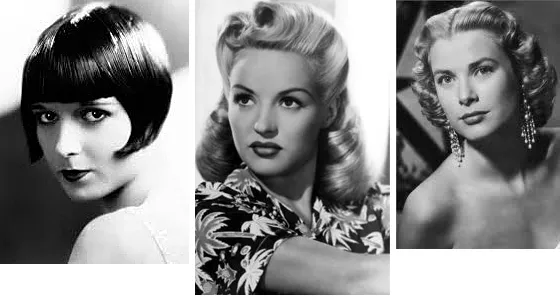In the constant search for individual expression, the ancient act of cutting hair has evolved beyond scissors and ephemeral trends.
Entering a new era, Haircut 2.0 emerges as a stylistic revolution driven by the convergence between tradition and technology.
Conception and History: The Hair Renaissance
Haircut 2.0 is not just a technical evolution, but a redefinition of the very concept of styling hair. Its conception dates back to the human need for self-expression, a journey that began with ancient civilizations and evolved through the centuries.
The rise of social media and digital culture has accelerated the metamorphosis, transforming the act of cutting hair into a globally shared visual narrative.
Technology: The Magic Behind Virtual Scissors
Haircut 2.0 is more than just a software update for salons; it is a fusion of art and science. Augmented reality (AR) tools enable real-time visualization of different cutting styles, allowing customers to virtually try them on before deciding.
Motion sensors integrated into the scissors detect patterns and angulations, ensuring millimeter precision. Artificial intelligence, powered by vast databases of styles and preferences, offers personalized suggestions, leading to a truly unique cutting experience.
User Experience: From Chair to Virtual
Haircut 2.0 transcends the traditional salon experience. Customers don't just sit in a stylist's chair, they immerse themselves in a virtual universe where every movement of the scissors is calculated and refined by technology.
The interaction between stylist and client now extends beyond the mirror, as both collaborate to create a hair masterpiece. The haircut journey becomes a sensory experience, where sight, touch and, surprisingly, even sound play crucial roles.
Market Presence: An Unstoppable Wave
Haircut 2.0 is no longer an exotic novelty; is an unstoppable wave that is reshaping the beauty industry around the world. Iconic brands and renowned salons have embraced this revolution, integrating technology directly into their operations.
Consumer demand is pushing the industry towards widespread adoption, with offering personalized haircuts becoming a vital competitive differentiator.
Culture and Identity: Cutting Beyond the Threads
In addition to aesthetic trends, Haircut 2.0 plays a profound role in cultural and identity expression. It's not just a physical change; it is an affirmation of individuality, a manifestation of identity.
The technology behind the haircut is now a tool to promote diversity and celebrate the multitude of styles that reflect the richness of contemporary society.
The History of Haircuts: A Hair Chronology
Over the centuries, haircuts have played significant roles in various cultures. In Ancient Greece, long hair was a symbol of nobility and social status.
Roman legionaries, on the other hand, adopted short and precise cuts as part of a military strategy, minimizing the risk of capture in combat.
In the Renaissance, hair was seen as a blank canvas for artistic expression. Elaborate hairstyles and extravagant wigs were the norm among high society.
The French Revolution, in turn, brought with it the rise of Titus-style courts, a radical response to pre-revolutionary opulence.
The 20th century witnessed an explosion of hair diversity. From the very short cuts à la garçonne of the 1920s, to the long locks of the 1970s, each decade left its unique mark. Punk, in the 1980s, brought with it rebellious cuts and vibrant colors, challenging established aesthetic norms.
Contemporary Haircuts: From Tradition to Innovation
Today, the world of haircuts is a playing field for a variety of styles ranging from classic to ultramodern. Traditional cuts still have a prominent place, with barbershops that preserve the art of scissors and razors.
However, the contemporary era has seen the rise of innovative cuts, often driven by digital influencers and celebrities. The modern haircut is a statement of individuality, often defying standards and breaking boundaries.
Asymmetrical cuts, elaborate fades and vibrant colors have become signs of courage and authenticity. The hair industry has embraced diversity, reflecting the growing acceptance of individuality in all its forms.
Tools and Techniques in the Art of Haircutting
Throughout history, technical evolution in the field of haircuts has been as remarkable as the styles themselves. If in Ancient Greece rudimentary scissors were used to create simple cuts, the Industrial Revolution brought with it more advanced razors and razors, allowing for more precise and detailed cuts.
In the 20th century, the introduction of electric clippers revolutionized the industry, offering efficiency and consistency in the pursuit of stylistic perfection.
Modern technology has allowed the creation of sharp blades and powerful motors, transforming haircutting into a true technical art form.
The arrival of the digital age has also had a significant impact. Cutting simulation software allows customers to virtually visualize different styles before committing to scissors.
Hairdressers, in turn, use 3D modeling techniques to improve their skills, creating increasingly complex cuts.
The Haircut Economy: From Traditional Salons to Innovative Studios
The haircut industry is not just about art and technique; It is also an economy in constant motion. From traditional neighborhood salons to high fashion studios, the diversity of customer experiences offered is as vast as the range of styles available.
Traditional salons, often operated by generations of hairdressers, offer a touch of nostalgia and personalized service.
On the other hand, modern studios take innovative approaches, incorporating bold interior design elements and cutting-edge technologies to create unique experiences.
The rise of specialized barbers is also noteworthy. These professionals not only master the art of cutting hair, but also revive the tradition of the barbershop as a social place, where customers can enjoy good conversation while receiving an impeccable cut.

Final Considerations: An Inevitable Evolution
In a world where incessant innovation is the norm, Haircut 2.0 emerges as a pioneer in the reinvention of ancient practices.
Its unique combination of tradition and technology not only simplifies the hair cutting process but elevates it to a dynamic art form.
As society continues its journey towards modernity, Haircut 2.0 stands out as a notable example of how technology can enrich even the most ingrained practices. This is an exciting chapter in hair history, and we are certainly just at the beginning of this fascinating journey.